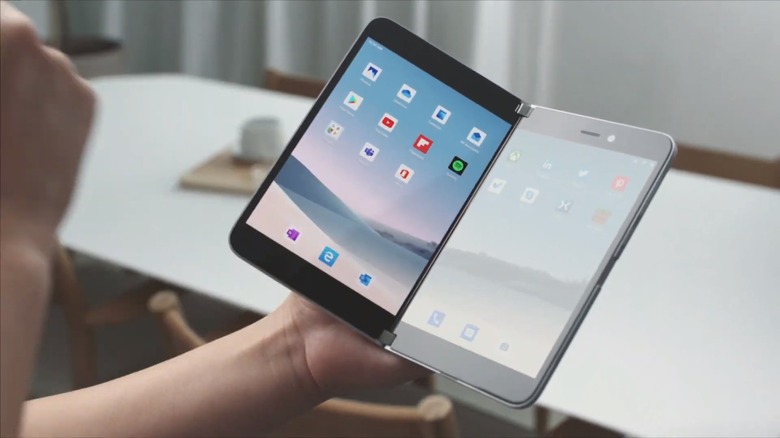Surface Duo Already Looks Like A Huge Missed Opportunity
Microsoft on Wednesday finally unveiled its first dual-screen Surface device. But instead of a single gadget supposed to run a special version of Windows 10 able to run Android apps on top, Microsoft surprised the world with two different gadgets, including the Surface Neo and the Surface Duo. The Neo is a dual-screen tablet/laptop gadget that does indeed need a different operating system, one that Microsoft calls Windows 10 X. The Duo, meanwhile, is a smaller, pocketable Surface, that runs Android complete with Google apps. And that's probably why the Duo feels like a huge missed opportunity.
The Duo marks Microsoft's return to making smartphones since it dumped Windows Phone and Nokia along with it a few years ago. And Microsoft making an Android phone is an incredible achievement for both Microsoft and Google.
But at the end of the day, this is still an Android device, which means Microsoft can't control the software, no matter how close its cooperation with partner/rival Google might be. That means Microsoft can't really dictate the software experience, nor can it guarantee fast updates. It's too early to tackle all of that give that the Duo launches only next year. But at the end of the day, all Androids that aren't made by Google live in the same universe, one where fast updates aren't guaranteed, and where vendors can't really optimize the software to make use of the hardware.
Let's not forget that Microsoft just confirmed that it's ready to customize existing hardware for the Surface Pro X, like Qualcomm's 8cx Windows-on-ARM platform, to improve the performance of the device. The company could create similar processors for Surface Duo versions that would run a version of Windows 10X with Android on top. That's assuming it would control the software experience, which isn't the case for the Duo. It's more likely that the Duo will pack the same hardware as all of 2020's flagship Android handsets, and deliver a similar experience.
Having Duo to run Windows 10X, just like the Neo, would have been a lot more exciting. And for both devices to have access to Google's Play store. On the other hand, Google may never allow such a product to exist, but the thought of having a smartphone that can offer the best of Windows and Android is definitely more appealing.
Because, if anything, it's the software that will really make you buy the Duo in the first place. The Neo design is exciting. A tablet that becomes a laptop is something I'd actually want to use. But shrink the same device down to smartphone size, and you get the kind of foldable handset concept that I personally hate.
It's one thing to consider buying a dual-screen device like the Neo that can be turned into a Surface Pro X replacement of sorts, offering a large display that makes the hinge-in-the-middle compromise more acceptable. And quite another to do the same thing with a phone.
Long before we knew how the Galaxy Fold would look like, I kept telling you that I hoped Samsung wouldn't go for a dual-screen type of foldable. The Duo fits in the same category of devices. It looks sleek from the outside, but this book-like gadget is definitely less appealing to me than the Galaxy Fold or the Huawei Mate X.
Which brings me back to my previous point. The thing that would make the Duo appealing would be a mixed Windows and Android experience that Microsoft isn't ready to — or can't — offer.
